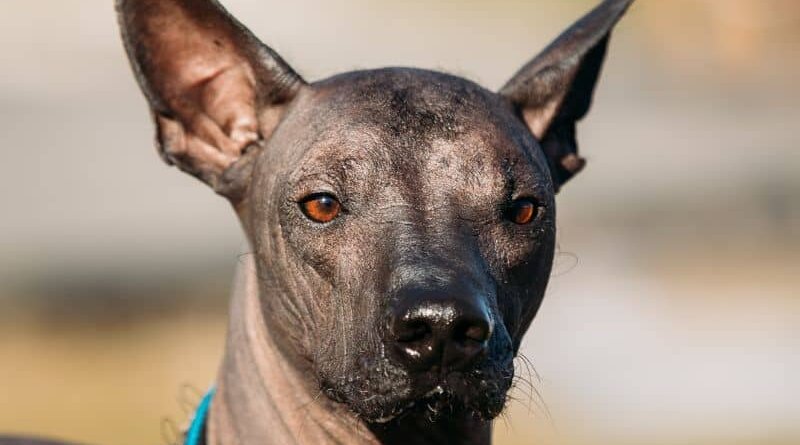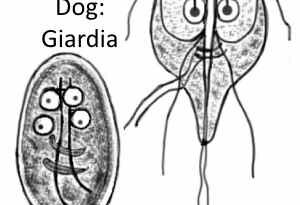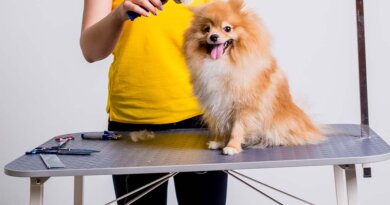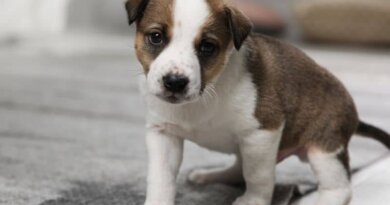12 Rare Dog Breeds That You Don’t See Everyday
This post may contain affiliate links. We may earn money or products from the companies mentioned in this post.
If you’re looking for a rare dog breed, you’ve come to the right place.
I’m discussing some unique dog breeds that you won’t see everywhere. And you’ll stand out wherever you go.
But when considering whether a new dog breed is right for you, consider his needs.
Dogs that were bred to work normally require more exercise and training than those bred to be companions.
So without further ado, here’s a list of some rare dog breeds for your consideration.
1. Xoloitzcuintli
Xoloitzcuintli (aka Xolos) are an ancient breed of dogs from Mexico. In fact, it’s the official dog of Mexico. They are in the non sporting group in the American Kennel Club (AKC).
Their unusual name is pronounced “show-low-eats-queent-lee.” They were considered sacred by the Aztecs and were often buried alongside their owners to be protectors in the afterlife.
Aztec tribes cherished them for perceived healing powers, which included asthma, rheumatism, and insomnia. People even slept with them being used as heating bags.
You can’t miss the distinctive look of a Xolo. The dogs have huge, prick-ears, almond-shaped eyes, a prominent muzzle, and often a hairless body. And their wrinkled forehead gives the dog the appearance of being in deep thought.
The hairless variety has a close-fitting tough skin with a tuft of hair on the head and feet and tip of the tail. There is also a coated variety with a short, flat coat.
Though they are generally a healthy breed, their skin is sensitive and they need to be protected from the sun. Xolos come in a variety of colors from black, gray, bronze, dark brown, and red.
Modern-day Xolos are companions as well as watchdogs. They aren’t nuisance barkers, but will bark when necessary. But they are brave dogs and won’t back down if challenged.
Xolos can be loyal and affectionate with their families but are wary of strangers. Because of their innate watchdog ability, they need to be socialized from puppyhood on so that they don’t become aggressive.
They are calm adults. But are rambunctious, noisy, and mouthy as puppies. By about two years old, they should settle down into calm, dignified adults.
They do need a fair amount of exercise to be on their best behavior. So a few walks and play sessions a day should be on your schedule.
And don’t forget mental stimulation through positive reinforcement training and enrichment activities for these intelligent, inquisitive dogs.
Xolos come in three sizes: a toy version (10” to 14” and 10 to 15 pounds); a miniature version (14” to 18” and 15 to 30 pounds); and a standard version (18” to 23” and 30 to 55 pounds). They are long-lived with a life expectancy of 13 to 18 years.
2. Lagotto Romagnolo
The Lagotto Romagnolo originally hails from Italy. The breed is pronounced “low-got-tow ro-man-yow-low.”
He was originally bred to hunt waterfowl but, since the 19th Century, has been used to sniff out an expensive delicacy, the truffle. They are in the AKC sporting group.
Lagotto Romagnolos have distinctive wooly curls throughout their entire bodies, with eyebrows and a beard. It’s hair that needs to be regularly trimmed and bathed at least monthly. They come in various colors from white, off-white, brown, sable, to orange roan.
They may have a teddy-bear appearance, but don’t be fooled. These are strong, tireless workers who require daily physical and mental exercise to not be destructive. So teach them obedience cues using positive reinforcement and give them a rotating variety of activity toys.
Lagottos are friendly with people and other dogs. Very playful, they love to spend time with their families.
The males stand at 17” to 19” at the shoulder and weigh 28.5 to 35 pounds. Females stand at 16” to 18” at the shoulder and weigh between 24 and 31 pounds. They have a long life expectancy of 15 to 17 years.
3. Dandie Dinmont Terrier
Dandie Dinmont Terriers originate from Scotland and were bred to hunt badgers and otters. True to their heritage, they still hunt vermin and have a strong prey drive towards little animals.
They have a unique appearance, with a large head with a pouf of hair, dark eyes, long back, broad chest, and short legs. Generally healthy, they can tend to have back problems because of their structure.
Though relatively small, these terriers have a big-dog personality. But they aren’t as high-strung as some terriers.
Dandie Dinmonts are an intelligent, bold, independent breed who won’t back down from a challenge. They bark only when they perceive that something’s wrong. They can be good watch dogs because of their deep bark.
They’re generally friendly dogs if bred, socialized, and trained properly. If properly raised, they’re not likely to develop “small-dog syndrome.”
Dandie Dinmonts require training that isn’t repetitive and that’s fun or they may tune out. They require a moderate amount of daily exercise.
Their pepper- or mustard-color coat requires professional plucking and some outline trimming. And daily brushing is recommended to avoid matting.
They stand 8” to 11” at the shoulder and weigh from 18 to 24 pounds. They have a life expectancy of 12 to 15 years.
4. Azawakh
The Azawakh (pronounced “az-a’walk”) is an ancient West African sighthound that was bred to chase gazelle across vast expanses of desert. They are also used as protectors.
Because they are very reserved with strangers so early and ongoing socialization is required so that the dog doesn’t become aggressive.
The Azawakh are highly energetic dogs with great endurance who require a considerable amount of daily exercise. So if you’re a jogger or runner, an Azawakh may fit into your lifestyle.
And they need to run free, so a fenced yard is necessary. Given enough outdoor exercise, they can be couch potatoes indoors.
They have an elegant, lean appearance much as a greyhound. Their short, smooth coat that doesn’t require much grooming. And they come in a vast array of colors ranging from cream, brindle, brown, gray, and red.
Males stand 25” to 29” at the shoulder and weigh between 45 and 55 pounds. Females stand between 23.5” and 27.5 “ at the shoulder and weigh between 33 and 44 pounds. They have a life expectancy of 12 to 15 years.
5. Mudi
The Mudi (pronounced “moody”) is a farm dog originating in Hungary. They were used to herd large flocks of sheep and even as watchdogs. It’s in the herding dog class under the AKC.
They are friendly and playful with people they know but independent with strangers. They need to be socialized early and on an ongoing basis to not be aloof with strangers.
They will bark when necessary if something out-of-the-ordinary occurs.
These are very high-energy, intelligent dogs who learn new tasks quickly and who require a lot of daily physical and mental exercise.
Without a sufficient amount of exercise and companionship, Mudis can become very destructive. So make sure to train them on a daily basis. And give them some advanced training by teaching them tricks or advanced obedience or agility.
They come in a wide variety of colors from black, brown, white, and gray. And their medium-length coat is wavy or curly and doesn’t require excessive care.
Mudis stand between 15.5” and 18” at the shoulder and weigh between 18 and 29 pounds. They have a life expectancy of 12 to 14 years.
6. Lowchen
Historians debate the origin of the Lowchen, whose name means “little lion” in German. He was used as a companion dog to royalty in many countries. They’re in the non sporting group in the AKC.
Lowchen are very friendly, happy, playful dogs who love everyone. But, if they perceive that something’s amiss, they will alert bark and make good watchdogs.
They are lively, sturdy dogs who need daily walks and play. But they won’t be a running or jogging partner.
Lowchen are very people-oriented and don’t do well if left alone for long periods of time.
Intelligent, they love to learn. So make daily time for training. They need daily mental stimulation to reach their full potential.
Their long, slightly wavy coat is often groomed in a lion cut in which the rear, back legs, and part of the front legs are shaved down, with some hair left on the tail.
Their coat requires regular grooming. Although no dog is totally hypoallergenic, Lowchens are considered to come close.
They come in a wide variety of colors from, black, brown, cream, and various shades of brindle.
They stand at 12” to 14” at the shoulder and weigh about 15 pounds. Generally healthy, they have a life expectancy of 13 to 15 years.
7. Thai Ridgeback
Originating from Thailand, this breed was used to pull carts, hunt vermin, and guard. They are still extremely rare outside of Thailand and are part of the AKC Foundation Stock program.
Thai Ridgebacks are muscular dogs who are distinguishable by the ridge of hair along their back that grows in the opposite direction of the rest of the coat.
This is an intelligent, independent breed that’s not for first-time dog owners.
They need a firm, fair hand in training with positive reinforcement so that they don’t decide to take over the house. And they shouldn’t be left free to roam because of their strong prey drive.
They are loyal to and naturally protective of their families. Because of their protective nature, they need early and ongoing socialization to prevent becoming aggressive.
They’re energetic and require a good amount of daily exercise. If their needs are met, they can settle down inside.
Their short coat requires little, just weekly, grooming. It comes in yellow, red, black or blue.
They stand from 20” to 24” at the shoulder and weigh 35 to 75 pounds. They have a life expectancy of 12 to 13 years.
8. Kai Ken
The Kai Ken originates from Japan and was used to hunt a wide variety of game, from pheasants to bears. They are in the Miscellaneous Class in the AKC.
These dogs are strongly bonded to and protective of their families. Because of their protective nature and their suspicion towards strangers, early and ongoing socialization is crucial so that they don’t become aggressive.
Because of their strong prey drive, they shouldn’t be let off-leash in an unfenced area.
They’re energetic and require a good amount of daily exercise to not become bored and destructive. Play and walks can satisfy their physical exercise needs. If these needs are met, they can be fine indoors even in an apartment.
Considered to have a soft temperament, they need positive reinforcement training that is very gentle.
Their short, double coats don’t require much grooming except during twice-yearly shedding periods.
Males stand from 18.5” to 19.5” at the shoulder and weigh between 30 and 40 pounds. Females stand between 15.5” and 17” at the shoulder and weigh between 25 and 35 pounds. They have a life expectancy of 12 to 15 years.
9. Pharaoh Hound
The Pharoah Hound is an ancient breed that was used to hunt rabbits and other small game in Malta.
An intelligent, gentle dog, they are playful and affectionate with their people and friendly to other dogs, although smaller dogs may trigger their prey drive. And, if properly socialized, they are friendly to other people.
As a sighthound, he has a lithe, slender, graceful appearance. His short, glossy coat is easy to groom on a weekly basis.
Because of their extreme prey drive they shouldn’t be let off-lead in an unfenced area or they may take off.
Unlike most sighthounds, they are barkers who bark when hunting and when they’re bored, see intruders, or hear a strange noise.
Young Pharaoh Hounds need three or four exercise sessions a day, including walks and free running in a safely enclosed area.
Older ones can be content with a play session and some running every day. If their needs are met, they can settle comfortably inside.
Males stand 23” to 25” at the shoulder and females between 21” and 24” at the shoulder. They weigh between 45 and 55 pounds. They have a life expectancy of 12 to 14 years.
10. Bedlington Terrier
Originally used to dispatch vermin in England, Bedlington Terriers have high prey drive. Intelligent and playful, Bedlington Terriers still retain a hunting drive.
A Bedlington Terrier’s appearance is what sets him apart from other terriers–and breeds. He resembles a lamb, with a curly coat, pear-shaped head with a topknot and fleece ears.
His coat sheds little and is said to be hypoallergenic. It needs twice weekly brushing and clipping every two months.
They come in blue, sandy, or liver colors, sometimes mixed with tan.
Care should be taken around small animals because of his high prey drive. So a safe, enclosed area should be available for him to run off some steam.
Sometimes called playful clowns, they are outgoing with known people and can be reserved with newcomers. They need early and ongoing socialization so that their protective nature doesn’t become aggression.
Bedlington Terriers are a sensitive breed. They’re sometimes called stubborn, so training should be upbeat with positive reinforcement.
Although they are energetic, they can settle down inside if given a few walks and play sessions.
He stands 15” to 17.5” at the shoulder and weighs 17 to 23 pounds. He has a life expectancy of 11 to 16 years.
11. Swedish Valhund
Originally from Sweden, the Valhund is a rugged herding dog used to herd cattle. They are in the herding group in the AKC.
Known to be an energetic, friendly dog, Swedish Valhunds are highly intelligent and learn quickly.
They need daily training and mental and physical exercise so that they don’t choose their own activities and become destructive.
Swedish Valhunds do best with an active owner who challenges them and meets these needs. If their needs aren’t met, they can become very vocal.
Although they can be great with children, they should (as should all dogs) be supervised because their herding drive will take over.
Their wedge-shaped head, medium-size erect ears, and long body give them a distinctive appearance. Their tail can be natural (long, stub, or bob) or docked.
They require weekly grooming to remove dead hair and stimulate the skin. And it will help because they are shedders.
They come in various colors, including gray, red, black, or white with sable or white markings.
Males stand between 12.5” and 13.75” at the shoulder and females between 11.5” and 12.75” at the shoulder. They weigh between 20 and 35 pounds. They have a life expectancy of between 12 and 15 years.
12. Chinook
Developed in the state of New Hampshire, Chinooks (pronounced “sha-nook”) were bred to be sled dogs and are often just family companions now. They are in the working group in the AKC.
Chinook are family-oriented, child-friendly dogs who thrive when given attention. They are also friendly with other dogs when socialized properly. They can be standoffish with strangers.
Given enough exercise, they can be laid-back at home. So prepare for about an hour of daily exercise, including walks and play. They love to run in a fenced yard.
Though not barkers, they can be noisy when whining or woo-wooing, as some sled dogs do. If their needs are met, they can be calm indoor dogs.
Chinooks have a thick, double coat that needs weekly grooming. The coat comes in a wide variety of colors, running from red gold, fawn, buff, white, gray, and black with white or buff markings and a black mask.
Males stand from 24” to 26” at the shoulder and weigh between 55 and 90 pounds. Females stand between 22” and 24” at the shoulder and weigh between 50 and 65 pounds. They have a life expectancy of between 12 and 15 years.
FAQs
I’m looking for a rare dog breed that’s basically hypoallergenic. What can you suggest?
Read up about the Bedlington Terrier and the Lowchen. As long as you can meet the dog’s needs and his temperament would fit into your family, these breeds might be what you’re looking for.
I’m looking for an unusual small-breed dog who is very friendly, as we have a lot of company.
A Lowchen, Lagotto Romagnolo, or Swedish Valhund can fit the bill. They are both friendly with strangers when bred and raised properly.
I’m interested in finding a watchdog dog that’s relatively rare and not likely to be overbred. What can you suggest?
Xoloitzcuintli, Azawakh, Thai Ridgeback, Kai Ken, and Pharaoh Hounds will bark to alert you that something’s amiss. Just be sure that the breed will fit into your family and that you can meet his needs.
Final Thoughts
There are many rare breeds that may fit your lifestyle. They have diverse backgrounds and needs. So before you select one, make sure that they are the best choice for you.
Do you have a rare breed or are you thinking about getting one? Please tell us about it in the comments section below.
Save To Pinterest
Top Picks For Our Puppies
- BEST PUPPY TOY
We Like: Calmeroos Puppy Toy w/ Heartbeat and Heat Packs – Perfect for new puppies. Helps ease anxiety in their new home. - BEST DOG CHEW
We Like: Mighty Paw Naturals Bully Sticks – All of our puppies love to bite, nip, and chew. We love using Bully Sticks to help divert these unwanted behaviors. - BEST DOG TREATS
We Like: Crazy Dog Train-Me Treats – We use these as our high-value treats for our guide dog puppies. - BEST FRESH DOG FOOD
We Like: The Farmer’s Dog – A couple months ago we started feeding Raven fresh dog food and she loves it! Get 50% off your first order of The Farmer’s Dog.
Check out more of our favorites on our New Puppy Checklist.




